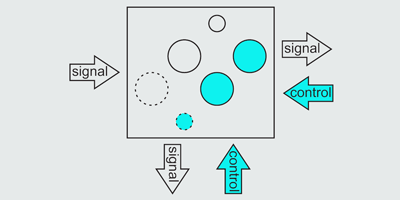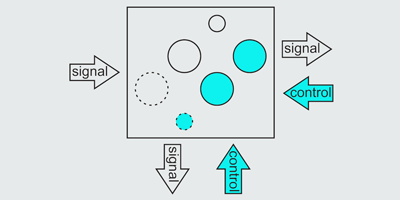Logic with Light and Matter
Controlling single photons with other photons offers one route to robust quantum information processing, but this is hard to do in conventional optical materials. Taking a different tack, Christoph Vo and colleagues at the Max Planck Institute for Quantum Optics in Garching, Germany, report in Physical Review Letters their efforts to build optical logic gates with Bose-Einstein condensates. In this case, a photon is converted to an atomic excitation and stored until it is stimulated by control photons to turn back into a photon.
Vo et al. aim two light pulses at a rubidium- Bose-Einstein condensate, which prepares a population of atomic states with a defined momentum. Another pulse pair is introduced, but with one of the pulses coming at a different angle, creating an atomic population with different momentum vectors. These populations are matter waves, which are allowed to interact until a retrieval light pulse turns the scattered atom states back into photons. However, the retrieval pulse only generates output light if the two input signals are present, in essence creating one of the most elementary of logic devices, the AND gate.
Although the gate is a classical one, and not a quantum device operating in the world of single photons, the authors show the operations are phase coherent and that the interacting matter waves can in fact be used to control light with light. At the same time, Vo et al. are well aware of the challenges in scaling down to single photons, with the path to that result as yet unclear. – David Voss





